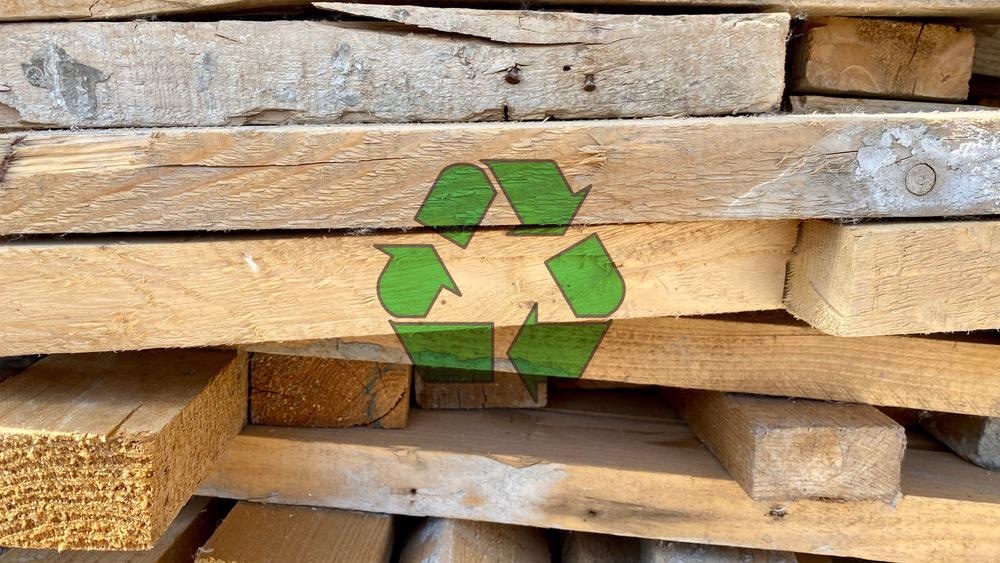As humanity moves towards a carbon-free future, the industry will have to rapidly adopt new, greener practices. This article will look at how the construction industry can contribute to achieving net-zero carbon by accelerating its uptake of green machinery and materials.

Image Credit: helloRuby/Shutterstock.com
The Environmental Impact of the Construction Industry
The global population is growing at an accelerated rate and is expected to reach around 10 billion by 2050, which is only a couple of decades away. As the population increases, so does the need for domestic and commercial buildings, as well as infrastructure to support population centers.
Roads, airports, transport hubs, schools, hospitals, and many more elements of the built environment are needed. Cities are gradually becoming larger and more nebulous, swallowing up entire tracts of land.
The growth in urban population centers is causing an effect on the natural world. The global construction industry contributes to environmental damage, pollution, and climate change. Currently, the construction sector is responsible for 11% of global carbon emissions. In the UK alone, the figure is 40%. Construction and demolition projects were responsible for nearly 145 million tons of waste sent to US landfills in 2018.
The scale of the problem is massive. To avoid the worse effects of climate change, world governments have committed to net-zero carbon emissions by 2050. The UK construction industry alone must aim for a 78% decarbonization rate by 2035 if it is to meet its commitments. Aside from the dangers posed by emissions from dirty heavy machinery, embodied carbon is a real issue: it is responsible for 20-50% of the whole life emissions of a building.
More on Green Building Practices: Can Fossil Fuel Free Steel Mitigate Construction’s Carbon Footprint?
Clearly, as we move toward a zero-carbon economy, the construction industry must tackle issues of sustainability, waste, and emissions. Only through approaches that have innovation at their core can this be possible. But how can the construction industry accelerate its adoption of green machinery, materials, and practices?
Phasing Current Machinery Out in Favor of Greener Options
Vehicles and industrial plants are one of the main contributors to global emissions. The construction industry still overwhelmingly relies on diesel-powered machinery which emits pollutants such as carbon monoxide, nitrogen oxide, and particulate matter as well as carbon dioxide. Whilst good maintenance practices and fuel additives can go some way toward reducing emissions, there is a pressing need to adopt greener industrial machinery.
Alternative green fuels, electric powertrains, and increasingly connected machinery that can monitor fuel consumption, machine health, productivity, and cycle segmentation are all options to improve energy consumption and reduce emissions. Economy modes can provide fuel savings of up to 20% by only using engine power when it is needed. Systems that monitor tire pressure provide better fuel efficiency.

Image Credit: MintImages/Shutterstock.com
One roadblock is cost—conventional machinery can be seen as cheaper than new, smart alternatives. Government grants and incentives can help to bridge the gap between cost and sustainability, and social responsibility will also play a part.
Adopting Green Materials
Current building materials have a huge environmental impact. Portland Cement, a crucial building material used worldwide, emits nearly 622kg of CO2 per ton. The global cement industry is responsible for7% of global emissions. Additionally, the production of steel and glass emits huge levels of CO2. It is not just the production, either: the raw materials must be mined, refined, and transported.
The construction industry must move beyond these traditional building materials if it is to become more sustainable. Reusing materials rather than producing new ones will provide savings on embodied carbon. New materials must be considered. “Living” concrete, which combines traditional materials with microbes, is an especially interesting material.
Trapping Carbon - Calcium Carbonate Concrete: Building on Recycling
This green construction material is self-repairing and acts as a carbon sink. Hemp is being used to make a bio-composite material called hempcrete.
Reducing the carbon footprint of the manufacturing process is fundamental to creating sustainable building materials. A recent partnership between SSAB and Pleab has produced “sustainable” steel by using hydrogen in iron ore reduction rather than fossil fuels, as well as spearheading electric arc reduction techniques. Calcium carbonate concrete is being made from recycled concrete and CO2 recovered from the air.
Holistic and efficient building design can also play a part. Even using timber in building designs can provide a benefit to a new building’s carbon footprint compared to steel and glass. Clearly, innovative approaches are needed if the industry is to break free from traditional building materials.
How Can the Industry Accelerate Uptake of Green Technology and Materials?
There is a sense of urgency surrounding the need for the industry to increase its sustainability. There are issues with cost, scalability, the slow pace of regulatory change, and reticence on behalf of the industry in reusing rather than demolishing old buildings. Whilst the industry has already made great strides, with a 53% reduction in carbon emissions since 1990, more needs to be done.
Whilst a part of the solution will be ground-up, such as the phasing out of diesel-powered construction equipment in favor of greener alternatives, there must be a top-down approach as well. The construction industry needs to adopt national targets to reduce carbon emissions. Whole-life carbon assessment needs to be a part of new developments and public procurement. Current design and performance standards need to be updated at an industry and government level.
Further solutions that can speed up the adoption of new practices include financial and tax incentives that favor reusing buildings rather than demolishing them. Best practices in low-carbon construction and procurement must be defined and promoted by both governments and the industry.
Net-zero principles and practices must be central to the entire industry, from training to professional development. Governments must implement an interconnected systems approach to the entire issue, in both the construction sector and government departments.
The Future
The scale of the problem facing the construction industry, and wider society, is huge. Only by applying a system-wide approach that fosters innovation will the sector accelerate its uptake of sustainable practices. However, it is possible with the right will to achieve this. The green future of the construction industry depends on it.
Further Reading and More Information
Royal Academy of Engineering (2021) Construction sector must move further and faster to curb carbon emissions, say engineers [online] Fenews.co.uk. Available at: https://www.fenews.co.uk/press-releases/217-resources/76708-construction-sector-must-move-further-and-faster-to-curb-carbon-emissions-say-engineers
Rogers, D (2021) Industry told to speed up carbon reduction programme [online] Building.co.uk. Available at: https://www.building.co.uk/news/industry-told-to-speed-up-carbon-reduction-programme/5113870.article
BigRentz.Inc. (2021) 23 Construction Waste Statistics & Tips to Reduce Landfill Debris [online] Bigrentz.com. Available at: https://www.bigrentz.com/blog/construction-waste-statistics
Corless, V (2020) Scientists create living concrete from bacteria and sand [online] Advancedsciencenews.com. Available at: https://www.advancedsciencenews.com/scientists-create-living-concrete-from-bacteria-and-sand
Tiseo, I (2021) CO2 emission from machinery and equipment manufacturing in the UK 1990-2019 [online] Statista.com. Available at: https://www.statista.com/statistics/485992/co2-emissions-from-the-manufacture-of-machinery-and-equipment-uk/
Disclaimer: The views expressed here are those of the author expressed in their private capacity and do not necessarily represent the views of AZoM.com Limited T/A AZoNetwork the owner and operator of this website. This disclaimer forms part of the Terms and conditions of use of this website.